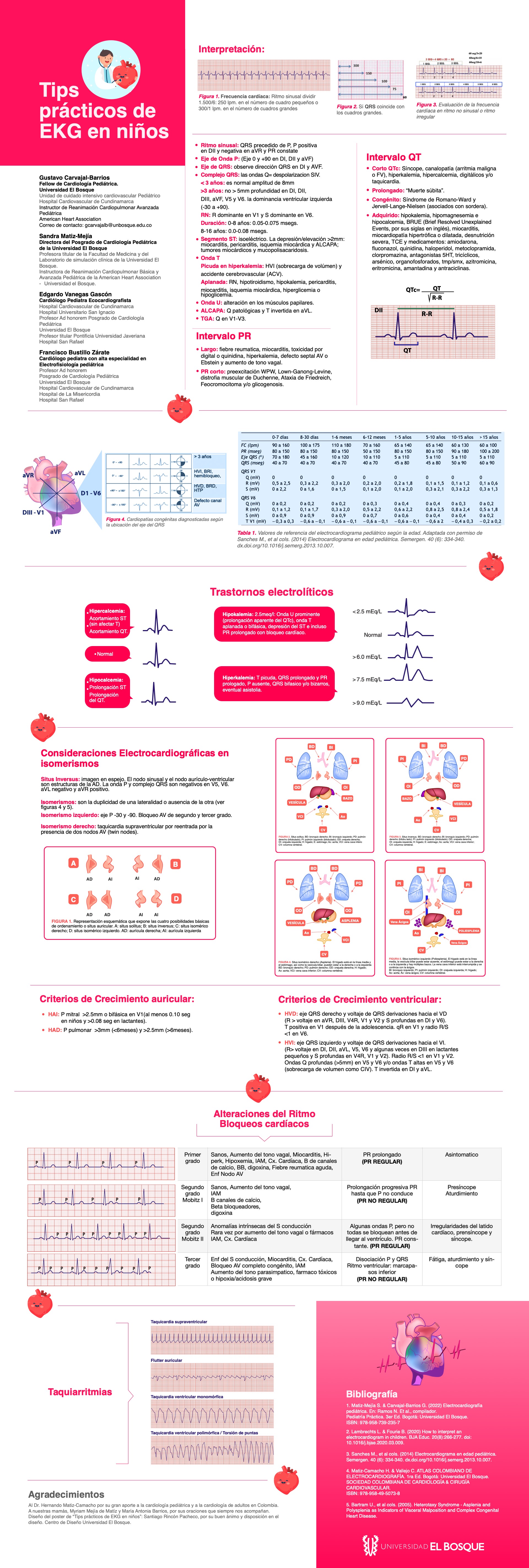Practical EKG tips in children Practical EKG tips in children
Main Article Content
Abstract
We present the poster of tips for reading EKG in children.
Downloads
Article Details

This work is licensed under a Creative Commons Attribution-NonCommercial-ShareAlike 4.0 International License.
Creative Commons
License Attribution-NonCommercial-ShareAlike 4.0 International (CC BY-NC-SA 4.0)
You are free to:
Share - copy and redistribute the material in any medium or format.
Adapt - remix, transform, and build upon the material The licensor cannot revoke these freedoms as long as you follow the license terms.
• Attribution — You must give appropriate credit, provide a link to the license, and indicate if changes were made. You may do so in any reasonable manner, but not in any way that suggests the licensor endorses you or your use.
• NonCommercial — You may not use the material for commercial purposes.
• ShareAlike — If you remix, transform, or build upon the material, you must distribute your contributions under the same license as the original.
• No additional restrictions — You may not apply legal terms or technological measures that legally restrict others from doing anything the license permits.
References
Matiz-Mejía & Carvajal-Barrios G. (2022). Electrocardiografía pediátrica. En: Ramos N et al., compilador. Pediatría práctica. 3er Ed. Bogotá: Universidad El Bosque. ISBN: 978-958-739-235-7.
Lambrechts L. & Fourie B. (2020) How to interpret an electrocardiogram in children. BJA Education. 20(8): 266-277. doi: 10.1016/j.bjae.2020.03.0090
Sanches M., et cols. (2014) Electrocardiograma en edad pediátrica. Semergen. 40 (6): 334-340. dxdii.org/10/1016/j/semerg.2013.10.007.
Matiz-Camacho H. & Vallejo C. Atlas colombiano de electrocardiografia. 1ra Ed. Bogotá: Universidad El bosque. Sociedad Colombiana de Cardiología & Cirugía Cardiovascular. ISBN: 978-958-49-5073-8
Bartram U., et al cols. (2005) HEterotaxy Syndrome - Aspen and polysplenia as indicators of visceral malposition and complex congenital heart disease.

